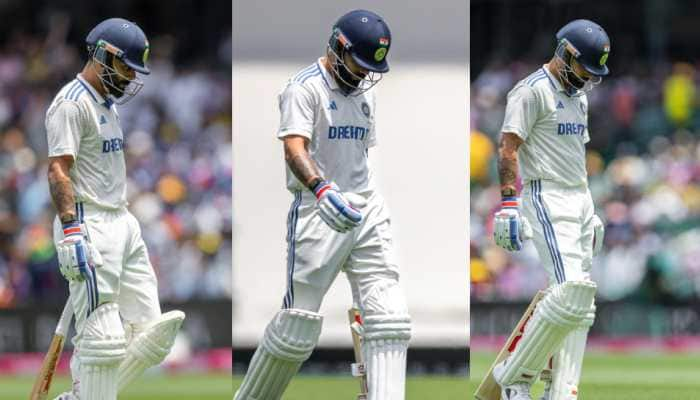‘Give us back our dust and cockroaches’, NASA tells auction company
NASA wants its cockroaches and moon dust back from an auction company that is selling the materials obtained during the 1969 Apollo 11 mission.
- The lunar rock was fed to cockroaches in an experiment.
- The space agency has urged Boston-based RR Auction to stop selling them.
Trending Photos
)
New Delhi: NASA wants its cockroaches and moon dust back from an auction company that is selling the materials obtained during the 1969 Apollo 11 mission. The lunar rock was fed to cockroaches in an experiment to see if it contained any pathogens that presented a hazard to terrestrial life. The space agency has urged Boston-based RR Auction to stop selling them. In a letter to the auctioneer, a NASA lawyer claimed that the material still belonged to the federal government. The experiment's materials, which included three cockroach carcasses and a vial containing 40 milligrammes of moon dust, were supposed to fetch at least $400,000 at auction but have since been removed, according to RR.
“All Apollo samples, as stipulated in this collection of items, belong to NASA and no person, university, or other entity has ever been given permission to keep them after analysis, destruction, or other use for any purpose, especially for sale or individual display,” said NASA in a letter dated June 15. (ALSO READ: Priyanka Chopra launches her own houseware brand Sona Home)
“We are requesting that you no longer facilitate the sale of any and all items containing the Apollo 11 Lunar Soil Experiment (the cockroaches, slides, and post-destructive testing specimen) by immediately stopping the bidding process," the letter added. (ALSO READ: Markets gain for 2nd day; Sensex, Nifty climb 1% amid firm global trends)
In an another dated June 22, NASA's lawyer asked RR Auction to work with the current owner of the material, seeking their return to the federal government.
For the unversed, about 47 pounds (21.3 kilograms) of lunar rock was brought to Earth with the Apollo 11 mission. Part rock was fed to insects, fish and other small creatures to find out if it would kill them.
The cockroaches that were fed moon dust were brought to the University of Minnesota where entomologist Marion Brooks dissected and studied them.
“I found no evidence of infectious agents," Brooks, who died in 2007, told the Minneapolis Tribune for an October 1969 story. She found no evidence that the moon material was toxic or caused any other ill effects in the insects, according to the article.
But the moon rock and the cockroaches were never returned to NASA, instead displayed at Brooks' home. Her daughter sold them in 2010, and now they are up for sale again by a consignor who RR did not disclose.
It's not unusual for a third party to lay claim to something that is being auctioned, said Mark Zaid, an attorney for RR Auction.
“NASA has a track record of pursuing items related to the early space programs," although they have been inconsistent in doing so, Zaid said. By its own admission, NASA acknowledged in one of its letters that it did not know about the previous auction of the cockroach experiment items.
“We have worked with NASA before and have always cooperated with the US government when they lay claims to items," Zaid said. “At the end of the day, we want to act appropriately and lawfully." RR Auction is holding on to the lot for now, but ultimately, it's up to the consignor to work something out with NASA, he said.
-- With IANS inputs.
Stay informed on all the latest news, real-time breaking news updates, and follow all the important headlines in india news and world News on Zee News.
Live Tv







)
)
)
)
)
)
)
)
)
)
